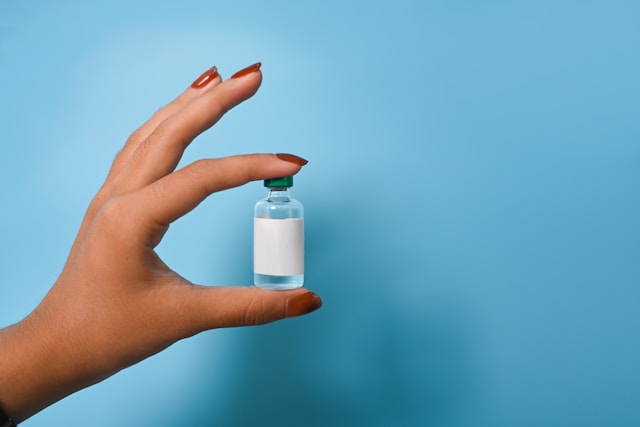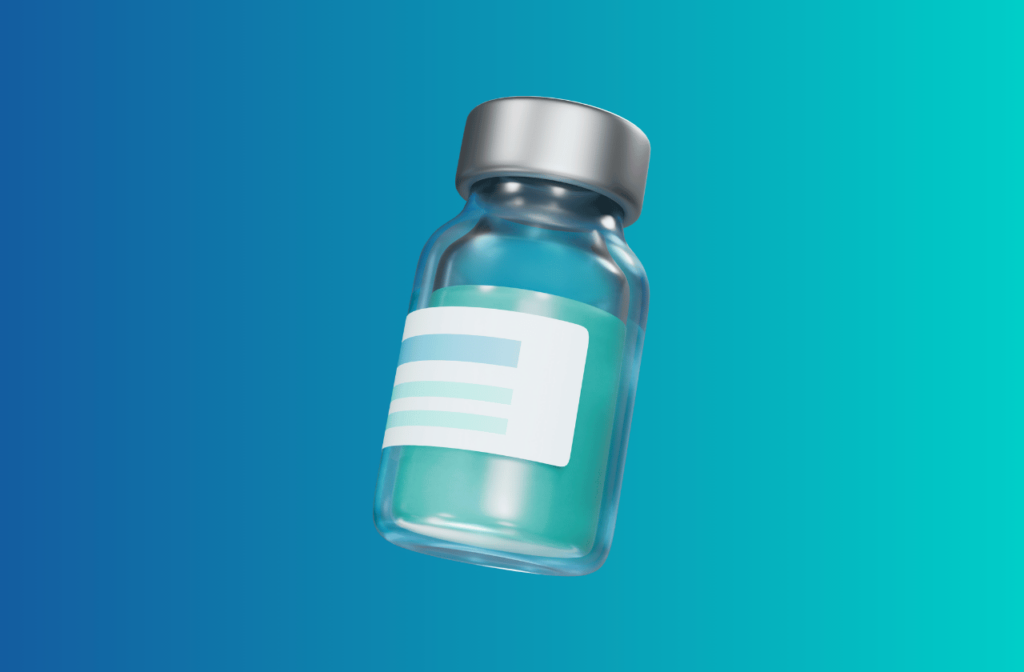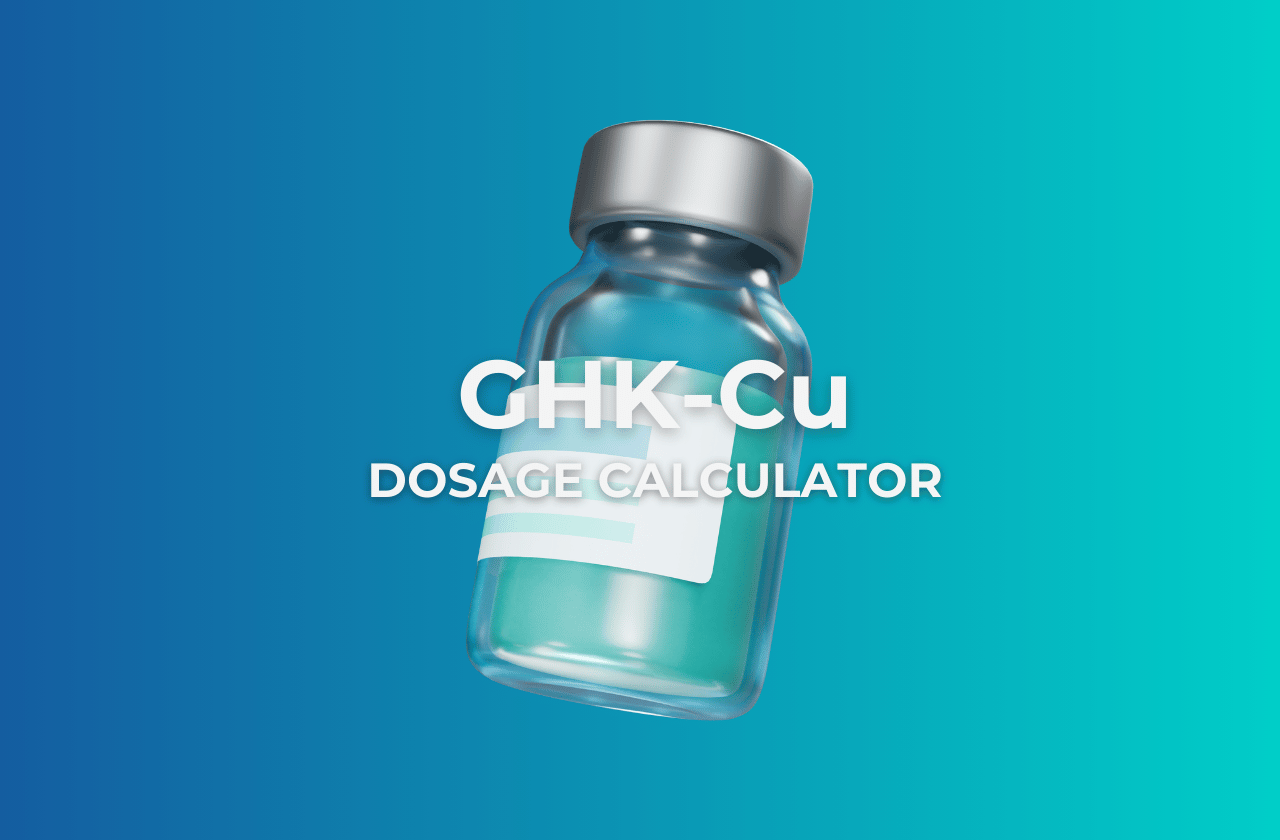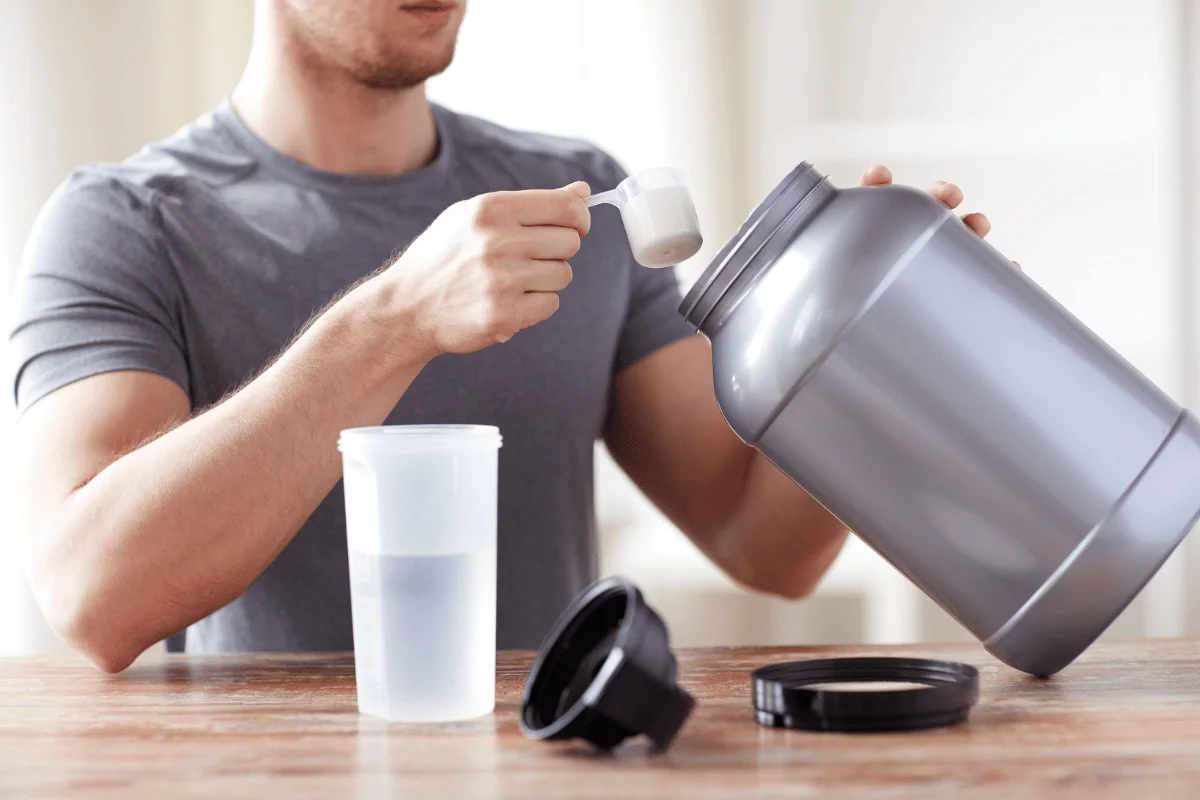[Disclaimer: This article is for informational purposes only and does not constitute medical advice. Always consult with a qualified healthcare provider before starting any peptide therapy.]
GHK-Cu peptide therapy has gained significant attention in health and beauty research for its potential benefits in skin repair, hair growth, and tissue regeneration.
This peptide consists of three amino acids bound to copper ions and has been studied for various applications.
The following GHK-Cu dosage guide provides detailed information on appropriate peptide dosing, common methods, how to reconstitute, and a simple peptide dosage calculator to maximize safety and efficacy.
What is GHK-Cu Peptide?
GHK-Cu is a naturally occurring copper peptide found in human blood, saliva, and urine. It appears to play a significant role in DNA repair within cells, potentially helping to reactivate regenerative genes while suppressing inflammatory ones.
The peptide has gained attention for several potential benefits:
- Wound healing and skin regeneration1
- Reduction in visible signs of aging1
- Promotion of hair growth and thickness1
- Anti-inflammatory and antioxidant effects1
- Tissue repair and collagen production1
As with any bioactive compound, appropriate dosing is critical to achieve desired results while minimizing potential side effects.
How GHK-Cu Works
The peptide functions by supporting multiple biological processes including:
- Stimulating collagen synthesis in skin cells1
- Increasing protein accumulation1
- Promoting the synthesis of decorin and metalloproteinases1
- Suppressing inflammatory cytokines1
- Stimulating antioxidant gene activity1
These mechanisms explain why GHK-Cu has been investigated for such a wide range of applications, from cosmetic to therapeutic.
GHK-Cu Dosage Calculator
Peptide Reconstitution Calculator
What is the total volume of your syringe?
Select Peptide Vial Quantity
How much bacteriostatic water are you adding?
Concentration: 5.000 mg/mL (5000 mcg/mL)
How much of the Peptide do you want in each dose?
Draw up: 0.010 mL to get 50 mcg
Insulin syringe: 1.0 units (if using a U-100 syringe)
To have a dose of 50 mcg pull the syringe to 5
How to Use the Peptide Calculator
Peptide calculators are essential tools for researchers and healthcare practitioners to determine precise dosing, especially for injectable formulations.
Basic Calculation Formula:
- Determine peptide concentration: Total peptide amount (mcg) ÷ Volume of solution (mL)
- Calculate required volume for desired dose: Desired dose (mcg) ÷ Concentration (mcg/mL)
Example Calculation:
- If you have 5mg of GHK-Cu (5000mcg) and add 3mL of bacteriostatic water:
- Concentration = 5000mcg ÷ 3mL = 1666.7mcg/mL
- For a 250mcg dose, required volume = 250mcg ÷ 1666.7mcg/mL = 0.15mL (15 units on a standard insulin syringe)
Third-Party Tested, 99% Purity
Order lab-verified peptides from our top recommended vendor.

GHK-Cu Dosages and Chart
GHK-Cu can be administered through several routes, each with specific dosage recommendations based on available research and clinical observations.
Here is a simple chart summarizing common GHK-Cu dosage recommendations by method:
| Method | Typical Concentration / Dose | Frequency / Notes |
|---|---|---|
| Topical (Skin) | 2% (Eyes), 4% (Face/Neck/Body) | 1-2 times daily |
| Topical (Hair) | 4% (Scalp) | Apply after washing |
| Injectable (SC) | 1-2 mg | Daily, often cycled (e.g., 4-6 weeks on, 2-4 weeks off) |
| Oral (Liposomal) | 100-200 mcg | Daily (Requires specific liposomal formulation) |
Topical Applications
Topical formulations of GHK-Cu are among the most common and accessible methods of administration, particularly for skin and hair applications.
Concentration Guidelines:
- Standard range: 2% to 10% for skin applications
- Face, neck, and scalp applications: 4% concentration
- Eye area applications: 2% concentration (due to skin sensitivity)
- Typical dosage: One dollop of cream (approximately 50mg of GHK-Cu)
Application Protocols:
- Serums: Apply to clean, dry skin 1-2 times daily without rinsing
- Face creams: Apply morning and night as part of daily skincare routine
- Shampoo/scalp products: Apply after washing hair, massaging deeply into the scalp
For optimal results, consistent application over a period of three months may be necessary to observe noticeable improvements in skin health and rejuvenation.
Injectable Formulations
Injectable GHK-Cu provides a more direct delivery method but requires proper administration techniques and carries additional considerations.
Standard Dosage Recommendations:
- Typical concentration: Available as a 10 mg/mL solution in 5 mL vials
- Daily dosage: 1-2 mg (0.03-0.06ml or 3-6 units) subcutaneously
- Alternative recommendation: 0.2 mL delivered subcutaneously once daily
- Injection concentration range: 0.1% to 1.0%
Administration Schedule:
- Frequency: Daily injections, preferably at the same time each day
- Recommended schedule: Monday through Friday (with weekends off)
- Important note: Injectable GHK-Cu should be administered under professional supervision due to risks associated with self-injection
Oral/Ingestible Options
Oral administration of GHK-Cu requires special formulation to prevent breakdown in the digestive system.
Dosage Guidelines:
- Standard tablets/capsules: 100-200 mcg daily
- Liposomal encapsulated tablets: 120 mcg per serving (1-2 tablets daily)
- Important note: Regular pill forms without liposomal encapsulation are ineffective as the peptide is broken down in the intestines
- Research indicates higher doses of at least 10 mg daily may be required for effective liposomal delivery
GHK-Cu Dosage Guide for Specific Applications

Skin Health and Anti-Aging
GHK-Cu has been studied extensively for its potential to improve skin appearance and address visible signs of aging.
Topical Application:
- Face and neck: 4% concentration applied twice daily
- Eye area: 2% concentration (reduced to accommodate sensitive skin)
- Typical amount: One dollop of cream (approximately 50mg of GHK-Cu)
Injectable Application:
- For skin rejuvenation: 1-2 mg daily via subcutaneous injection
- Treatment duration: 4-6 weeks followed by a 2-4 week break
Observations suggest visible improvements in skin firmness, elasticity, and reduction in wrinkles after consistent use, often noted around the 12-week mark.
Hair Growth
GHK-Cu may help stimulate hair follicles and improve hair thickness.
Topical Application:
- Shampoo/scalp products: Apply after washing, massaging thoroughly into the scalp
- Concentration: 4% GHK-Cu for scalp applications
Injectable Application:
- Concentration: 0.1% to 1.0% in injectable topical solutions
- Dosage: 1-2 mg daily, with treatment protocols specifically designed for the scalp area
Research indicates that GHK-Cu may increase hair follicle size, potentially improving both hair growth and thickness.
Wound Healing
GHK-Cu’s regenerative properties make it a subject of interest for wound healing applications.
Topical Application:
- Apply directly to affected areas 1-2 times daily
- Concentration: 4% for most applications, may be increased for specific wound healing protocols
Injectable Application:
- For systemic healing: 1-2 mg daily injection
- Duration: 4-6 weeks followed by assessment
Studies report that GHK-Cu promotes cell proliferation and angiogenesis, potentially accelerating wound healing processes.
GHK-Cu Dosage Cycling and Duration
Cycling GHK-Cu administration appears to be a common practice in research protocols to maximize benefits while minimizing potential adaptation.
Standard Cycling Recommendations:
- Initial cycle: 30 days of daily administration followed by 30 days washout period
- Alternative protocol: 4-6 weeks on, followed by a 2-4 week break
- Long-term usage: May repeat cycles as needed based on response assessment
Expectations for Results:
- Initial improvements may be observed within weeks
- Full benefits typically require consistent use for up to three months
- Maintenance protocols may be developed after initial treatment cycles
Safety Considerations and Precautions
While GHK-Cu has shown promise in various applications, several safety considerations should be noted:
General Precautions:
- Copper peptides may not be approved for therapeutic use without prescription in all regions.
- Self-administration of injectables carries significant risks including infection and adverse reactions.
- A qualified healthcare professional should supervise any injectable GHK-Cu treatment.
Contraindications:
- Individuals with metal sensitivities or copper overload conditions (e.g., Wilson’s disease) should avoid GHK-Cu.
- Pregnant or breastfeeding individuals should not use GHK-Cu.
Potential Side Effects:
- Topical applications may cause mild skin irritation in sensitive individuals.
- Injectable forms may cause headache, nausea, or injection site sensitivity.
- GHK-Cu can lower blood pressure at high doses.
Important Interactions:
- Do not apply topical GHK-Cu at the same time as Vitamin C products, as copper counteracts Vitamin C’s antioxidant properties.
Bottom Line
GHK-Cu peptide offers promising potential benefits across multiple applications, from skin rejuvenation and hair growth to wound healing and tissue repair. Appropriate dosing varies by administration method, specific application, and individual factors. Topical applications typically utilize a 2-4% concentration, while injectable protocols generally recommend 1-2mg daily for 4-6 weeks followed by a rest period.
For those considering GHK-Cu treatments, consultation with healthcare professionals is essential, particularly for injectable formulations. Peptide calculators can assist in determining precise dosing, while cycling protocols may help maximize benefits while minimizing potential adverse effects.
As research continues to evolve, dosing recommendations may be refined further. The most important aspects of GHK-Cu administration remain consistent dosing, proper cycling, and professional supervision to ensure both safety and efficacy.
References
- Pickart, L., & Margolina, A. (2018). Regenerative and Protective Actions of the GHK-Cu Peptide in the Light of the New Gene Data. International journal of molecular sciences, 19(7), 1987. https://doi.org/10.3390/ijms19071987. ↩︎








